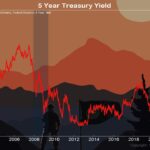Revitalization is hot in Silicon Valley. Some of America’s most successful entrepreneurs are looking to crack the process of aging and make death optional. One of the procedures done by a company called Ambrosia infuses older patients with a protein rich serum produced from the blood of young donors, aged 16-25. The cost of the procedure is roughly $8,000. Jason Pontin of Wired fills us in on more of the revitalization trends that are popular in Silicon Valley.
All over Silicon Valley and the regions that imitate it, executives follow weird revitalization fads. They think the code of aging can be hacked and death made optional. Daniel Gross, a partner at Y Combinator, fasts enthusiastically—and encourages others to do so—because he believes it will extend his life. Inventor Ray Kurzweil swallows 100 supplements a day for the same reason, presumably so he’ll live long enough to be uploaded into the singularity, circa 2045.
But you don’t have to be a prophet of posthumanism to wish for a few more good years. I’ve followed my own antiaging routines: For a time I ate 30 percent fewer calories than recommended, and I now starve myself for 16 of every 24 hours. And while there’s certainly plenty of folly in the tech elite’s quest for immortality, I’m glad they’ve embarked on it—for reasons that go beyond sheer entertainment value.
Unhappily for me—and everyone else—we’ve made little progress in extending the outer limit of the human lifespan. Yes, more people are living longer because we’ve gotten better at nutrition, curing acute conditions such as infections, and treating a handful of chronic diseases. But the maximum reported age at death has plateaued at around 115 years.
What’s tantalizing, however, are the breakthroughs in extending the healthy lifespan of other species. Two decades ago, UC San Francisco researcher Cynthia Kenyon showed that a mutation in a single gene can allow a roundworm to live twice as long. And at MIT, biologists Leonard Guarente and David Sinclair discovered that a class of genes called sirtuins regulates longevity in a wide range of organisms. Restricting the calories of yeast made them overexpress a particular sirtuin, extending their lifespans; mice genetically altered to overproduce the mammalian version lived longer and had fewer age-related diseases.
But for all those animal discoveries, human aging is a problem that the biomedical industry and its regulatory agencies are ill-suited to solve. It’s not a disease recognized by the FDA, and testing drugs for human life extension would be costly and time-consuming. As Sinclair says, “The aging field is thriving scientifically. But the translation of findings into treatments is poorly funded. Compared to heart disease and diabetes, the dollars allocated to aging are, at best, a hundred to one. But all it will take is one success to change the way people think.”
So far, the search for that first big success is stuck in the weeds. Elixir Pharmaceuticals, a company cofounded by Kenyon and Guarente to develop therapies that target aging, failed to create such a drug. Sirtris, founded by Sinclair, was equally unsuccessful. And while restricting calories is the best way we know to extend lifespans in organisms from yeast to mice, attempts to create medicines that harness the genes activated by caloric restriction have failed FDA approval.
But there are still plenty of enticing leads. Sinclair offers up a list of polysyllabic possibilities: “Super metformin, rapalogs, NAD boosters, mitochondrial activators, senolytics.” Self-experimenters are already playing with this menu of molecules. Some aspiring immortalists have long taken resveratrol, a compound found in red wine proven to activate sirtuins. Stem cell pioneer Robert Hariri swears by metformin, a diabetes drug that may extend the healthy lifespan of the general population. The most daring are rumored to use rapamycin, a powerful drug that prevents organ transplant rejection. Rapamycin inhibits a key metabolic pathway called mTOR that caloric restriction shuts down, initiating a process where dysfunctional cellular components are degraded and recycled. No one old or sick should take rapamycin lightly, because it suppresses the immune system, but safer therapies based on analogs of rapamycin, or rapalogs, could be the first real antiaging medicines.
Read the full story here.






